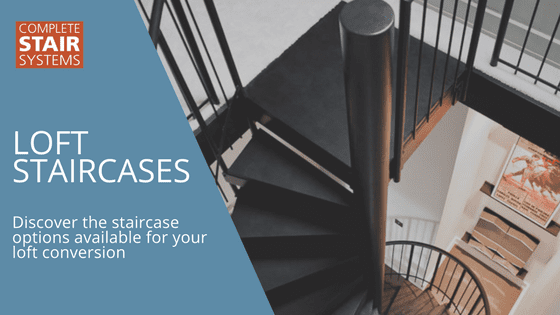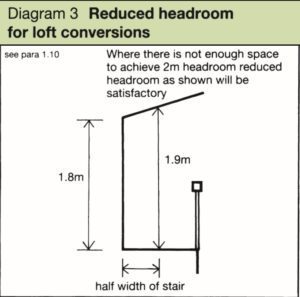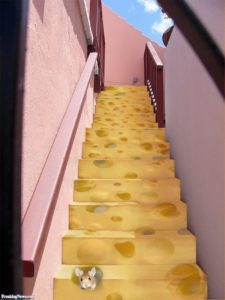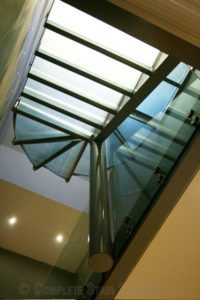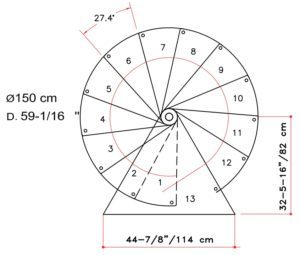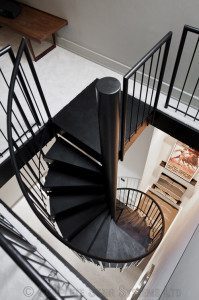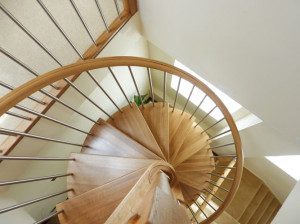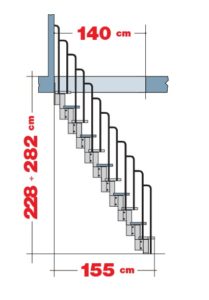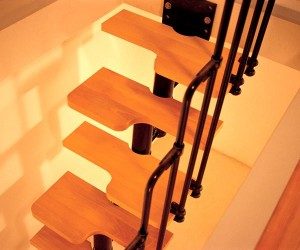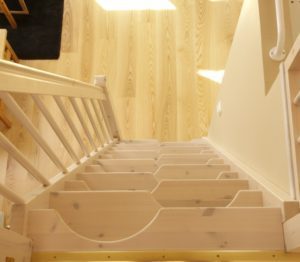Your Loft
When planning a loft conversion, one of the most important things you’ll be thinking about is saving as much space as possible. So what is the best, most efficient way to access your loft space with this in mind? Lets have a look at some of the product on the market.
Whilst keeping away from any outrageous (and expensive) bespoke creations there are three types of staircase you could use which all have a different footprint.
Conventional Staircase
The most common way of accessing a new loft space is with a conventional staircase with timber stringers either side and formed in a straight flight, quarter turn or half turn configuration. The right choice depends on the property itself and the location of any walls on the starting floor and in the loft space. A common approach is to use the space above and existing stairway and replicating the shape so the new flight follows the one below. Be aware however this solution would most likely require a dormer window in the loft to keep the headroom sufficient. Your architect and builder will look at the best location for the staircase and the configuration. They will look ensuring the staircase is not too steep (maximum 42 degrees) and the headroom over 2m. With the understanding that space is at a premium when accessing a loft, building regulations do permit a slight reduction in headroom if required although it is worth checking with your building control officer.
If a conventional staircase is the one for you – you will need t consider the materials you would like to build it. Perhaps it will be tucked away and nothing fancy is required. In which case do for a pine / MDF combination and maybe paint and carpet the treads and risers. If the stair is exposed and you wish to make a feature of the flight then consider open risers (ensuring the gap between the treads is less than 100mm), hardwood or even glass treads and maybe a steel supporting structure. Glass balustrade is also a very effective way of allowing the light to pass and illuminating a hallway.
One point to keep in mind. We and other firms offer staircases with a variety of supporting structures and different materials. Generally this does not effect the geometry of the staircase. A half turn staircase accessing a loft 2600mm high with 13 risers will take up the same amount of space and required the same stairwell regardless of whether the stair is made from softwood, glass or cheese!
Spiral Staircase
Spiral Staircases have long been a favourite for accessing a loft. Their space saving qualities mean you would gain space upstairs and down whilst creating a feature for your property. Many people would not like a spiral staircase as their primary stair but comfortable with the idea of using one to rise to the loft space which is generally not used as much. To tick all boxes for building regulations you need to talk to a specialist company (like us) and your building inspector. A secondary spiral stair needs to have a clear tread width of 600mm which, once you add the centre column and handrail, adds upt0 around a 1400-1500mm overall diameter – depending on the product. The opening in the floor will need to be a circle or square 100mm larger than the spiral diameter. So if you wish to have a 1500mm diameter spiral you would need a 1600mm x 1600mm opening in the floor or a 1600mm diameter hole in the floor. This is to allow for a knuckle gap between the handrail and the floor and the surrounding walls. If the floor to floor height is fairly standard then the spiral will generally rotate around 360 degrees from a platform which is part of the spiral itself. Below you can see a plan drawing of a typical 1500mm diameter spiral.
There a number of off the shelf kit spiral staircases on the market from around Europe which are available with steel or timber treads and a number of custom made models should you want something a little more special.
Alternator Tread (paddle step) Staircase
The ultimate save saving solution staircase is a alternator or paddle step flight. These are staircases designed with partially cut out treads so you have to walk up left-right-left right.
As either the left or right half of each step is missing the total going / length of the staircase is dramatically reduced therefore saving space upstairs and downstairs. Depending on the floor to floor height, these space saving staircase will only need an opting in the floor of around 1400mm x 650mm which isn’t that much bigger than a ladder loft hatch.
Building regulations do acknowledge their use within loft conversions but they should be installed in a straight flight only and have a handrail to both sides. Be aware that the building control office will have a final say of their inclusion into the property.
Got any question for us about staircases for your loft conversion? Whilst we don’t offer conventional stairs in softwood we can supply something a little special that will really catch the eye. Send us an email or call us and we’ll be more than happy to help advise on the best solution for your loft conversion. You can email us at info@completestairsystems.co.uk or call us on 01794 522 444.

